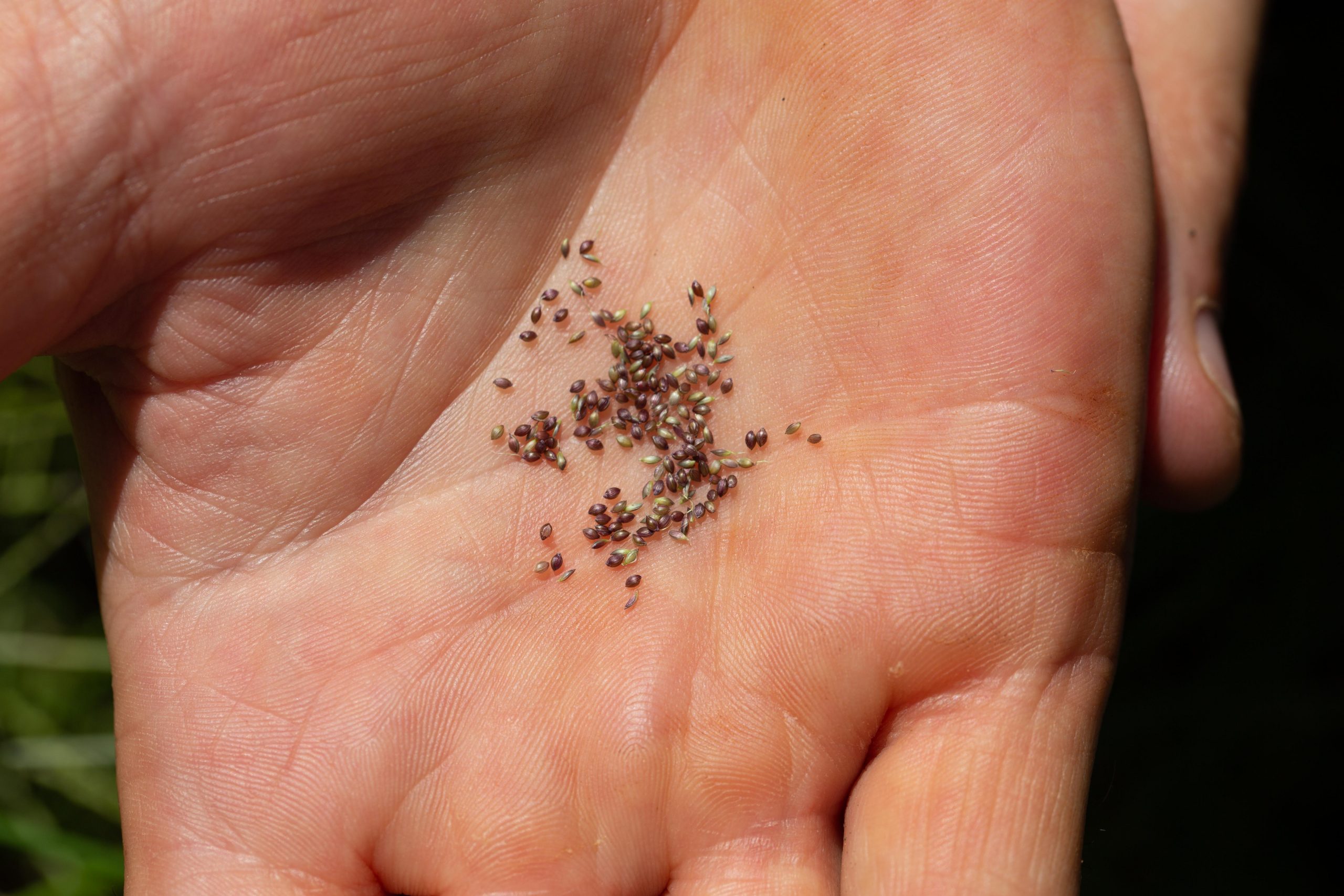Ancient grains such as quinoa, Khorasan wheat (Kamut), spelt, sorghum, amaranth, and others are increasingly popular among American consumers. Now, another ancient grain will soon appear on grocery store shelves: fonio, a versatile, nutritious, and sustainably produced grain from Africa. Minneapolis-based Terra Ingredients is bringing fonio to the U.S. market and making it available to food manufacturers, brands, and ingredient suppliers. The project will also provide much-needed income to subsistence farmers in Africa.

Fonio is grown in the Sahel region in sub-Saharan Africa
Fonio is grown in the Sahel region in sub-Saharan Africa, which stretches from the Atlantic Ocean to the Red Sea. According to Peter Carlson, director at Terra Ingredients, fonio is grown and eaten by the Fulani people, one of the larger ethnic groups in West Africa. “It’s been part of their diet for centuries,” he says.
Fonio contains many of the food qualities that American consumers want. It’s gluten-free, has a low glycemic index for people with blood sugar issues, and contains complete amino acids.
“It compares favorably nutritionally to corn, rice, wheat, and other diet staples,” Carlson says.
A village leader in Senegal told Carlson that when people in his area are sick they eat fonio. “It’s identified culturally as a healthier grain,” Carlson says.
Fonio makes great flour for breads and baked goods. It can be eaten whole as a grain to replace rice or couscous or combined with other dishes. It has a mild taste with a slightly nutty flavor and absorbs the flavors of ingredients it is combined with.
“It’s very versatile,” Carlson says.
Processing “nightmare”
The challenge with fonio is processing. The grain, which is in the millet family, has very tiny seeds, which makes every step in processing difficult—from harvest to hulling to hand cleaning.
“It’s extraordinarily labor intensive to process,” Carlson says.
Traditionally, fonio is threshed by hand or, more accurately, by foot. The edible part of the fonio is separated by the chaff by women stepping on it. But this process adds sand to the grain. Because fonio grains are about the same size and color as sand, the processing is “a nightmare,” Carlson says. “It takes hours and hours of work by women just to make a meal.”
The processing challenges explain why fonio has never gained wide acceptance outside of sub-Saharan Africa.
That’s where Terra Ingredients came in. Seeing the potential applications for fonio in Western diets, Terra developed an industrial scale method to process and remove the sand.
“It was clear that production of fonio could never scale unless there was a modern processing method that could process it in volume,” Carlson says.
The processing method includes pre-cooking fonio to maintain the grain’s texture so it doesn’t become mushy when added to water.
Terra Ingredients built a state-of-the-art fonio processing facility in Dakar, Senegal. Processing equipment is installed and in an interview in March, Carlson said the facility should be up and running “in weeks.”
Terra Ingredient’s GFSI (Global Food Safety Initiative)-certified affiliate, Stone Mill, has a pasteurization and quality control facility for fonio in North Dakota.
Improving the quality of life for farmers
Terra Ingredients developed an origination system for fonio that is committed to fair trade, community reinvestment, and sustainability of the crop in West Africa. Terra will buy the grain from the farmers, giving them a good source of income to improve their lives, something they’ve never had.
Buying fonio goes a long way to improving the quality of life of those farmers,” Carlson says. “Any outside cash is a boon.”
“Presently, there are no real export channels for fonio in West Africa,” says Malick Diedhiou, a Terra Ingredients merchandiser with roots in Senegal. “By creating one, Terra is providing farmers the option to grow grains for export and improve conditions in their community.”
Terra Ingredients will provide another benefit to the local communities by giving back hulled and processed fonio to the people. This provides a food source, while saving the communities from the arduous task of processing fonio.
“That’s one of our systems in community support and development,” Carlson says.
Giving food back to fonio producing communities in West Africa contrasts with the quinoa market, which has seen importers take a food source out of food insecure regions in Peru.
Sustainable production
Terra Ingredients buys fonio from small scale farmers and aims to ramp up supply as consumer demand for products made with fonio grows.
“We’ve had many producers tell us that they want to grow it,” Carlson says. “We currently buy in an ethical and responsible way, and are able to replicate our producer programs very quickly.”
Another advantage to fonio is that it is a sustainable crop. It’s grown without inputs, doesn’t require much water, and grows in arid region so it’s easy on the soil.
There is also a lot of grazing land and fallow grassland in West Africa where fonio can be grown.
We can grow a whole lot of fonio without changing any environmental dynamics. It has very minimal resource use in its production,” Carlson says.
Because fonio is grown without inputs it can receive organic certification, which Carlson plans to obtain.
Market interest
Terra Ingredients is in the early stages of marketing fonio to food manufacturers but Carlson says demand is there.
There’s quite a lot of interest right now. Some multinational firms are in research and development. But we can see behind the scenes that this is building; in 6 to 12 months fonio is going to be pretty commonly seen on store shelves.”
Three food manufacturers are already making products with fonio. Neilly’s Foods, which sells international cuisine, has five products using fonio. Organic cracker maker Flacker’s sells a fonio cracker snack food. Iya Foods, which specializes in foods sourced from Africa, is selling fonio flour and some bread products.
We’re just starting to see the consumer branded products come out with fonio as an ingredient,”
Chefs and health-conscious consumers will also benefit from the greater availability of fonio.
Carlson looks forward to bringing fonio to the U.S. “We’ve been working a long time on this. We’re very excited.”
He is even more excited about how fonio production and processing can help farming communities in West Africa.
“The really exciting part of all this is the benefits that are already happening at a small scale to the farmers and the villages, to what can happen with growing fonio.”









